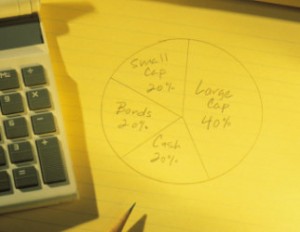Investors jump into bonds
Canadians are making a classic mistake.
Advertisement
Canadians are making a classic mistake.

Now that I’ve laid out my 2010 forecast for the three main asset classes and provided a suggested benchmark allocation, in print, it can’t be taken back. So you can all sit back and laugh as the markets develop throughout the year and you see how wrong a forecast can be.
I don’t mind that, because I firmly believe that it is better to have a forecast — any forecast — than to not have one. You can’t know if things are going wrong if you don’t have a sense of how they’re supposed to go right in the first place.
And things going wrong is what I want to talk about today. Not what’s going wrong for me and my forecast, but what a lot of Canadian investors appear to be doing wrong right now.
The inspiration for this thought process comes from an item that came across the Bloomberg wire service last week. Two statistics from that article really jumped out at me.
The news item was titled, “Bond Mutual Fund Investments More Than Double.” It noted that in January 2010 Canadian investors more than doubled their investment in bond funds, an increase of $806.5 million. It also stated that investments in bond funds in January 2010 were 37% higher than they were in January 2009.
What are they thinking? To me that sounds like a colossal mistake. In my many years in the market, I’ve seen lots and lots of retail investor portfolios, and what is quite prevalent is that retail investors don’t allocate sufficiently to fixed income; many have none at all.
So it’s possible — not likely but possible — that these investors have suddenly seen the light and are adding judiciously to their fixed income holdings merely to correct that long-standing imbalance. As if.
But I think it’s far more reasonable to assume that these investors are, once again, making the classic mistake of chasing what was hot last year or the last couple of years. And yes, bonds have been producing above-average total returns for several years now. So now they’re overallocating to bonds.
They would argue that they’re just chasing yield, and that yield can’t be found these days in GICs, term deposits and money market instruments. They’re worried about income trusts because of the coming tax in 2011. And so they’re turning to bonds (which did so well last year, blah, blah, blah…).
But there’s a huge difference between ‘yield’ and ‘total return’. The total return on bonds consists of interest income plus or minus the change in price of the principal amount.
Now I go back to my forecast. I noted that bonds did well last year for two reasons: interest rates came down substantially, and the credit spread came down substantially. But looking forward, interest rates are now at rock bottom, and in all likelihood will soon start to head up. In fact, this week Mr. Carney removed some language from the usual Bank of Canada mantra, making an interest rate increase after June all the more likely.
And credit spreads can’t come down much further, if at all.
So what do we have? We have interest rates about to rise, and little if any positive impact left from further tightening of credit spreads.
In other words, exactly the wrong time to overallocate to bonds: to double their holdings or to increase them by 37% year-over-year.
That’s one of the values of having a forecast: it gives you a great perspective. You have solid reasons for underallocating to fixed income in 2010, and then you see the great investing masses doing the exact opposite.
You wonder, “What are they thinking? What’s in their forecast — for rates, for credit spreads, for bond total returns in 2010? Do they even have one?”
And you don’t follow them down the path they’ve chosen.
David West is a columnist for Canadian Business Online
Share this article Share on Facebook Share on Twitter Share on Linkedin Share on Reddit Share on Email